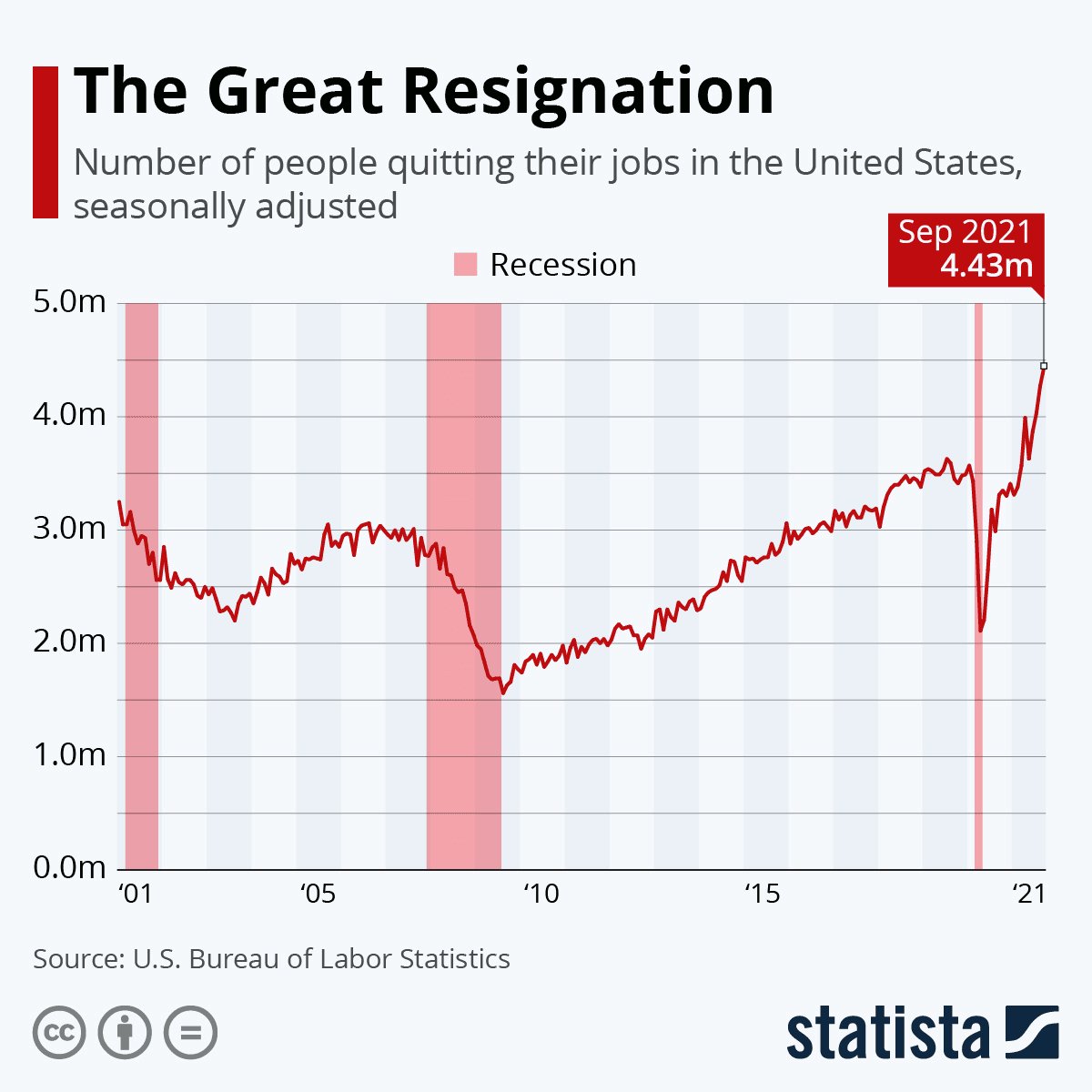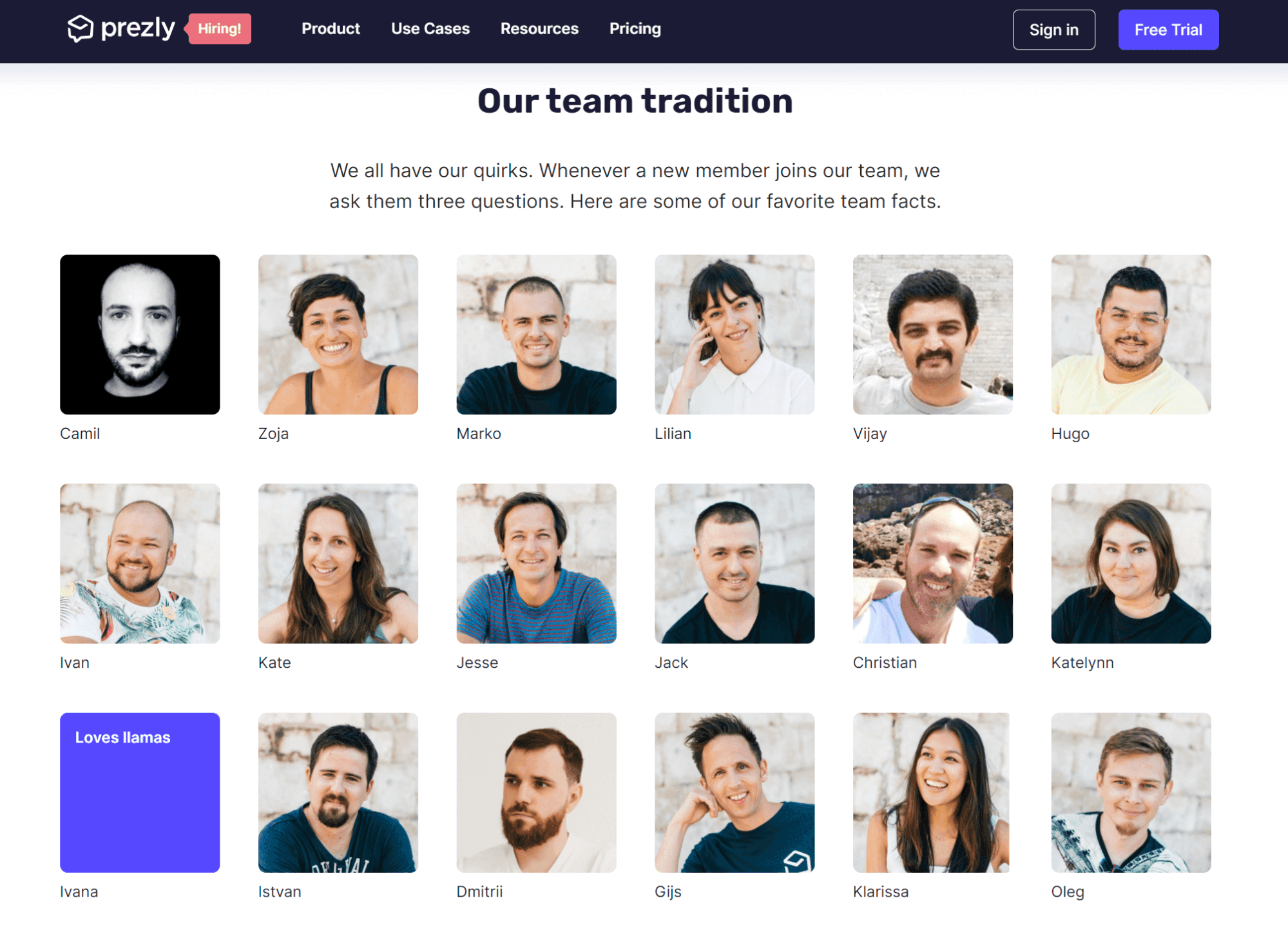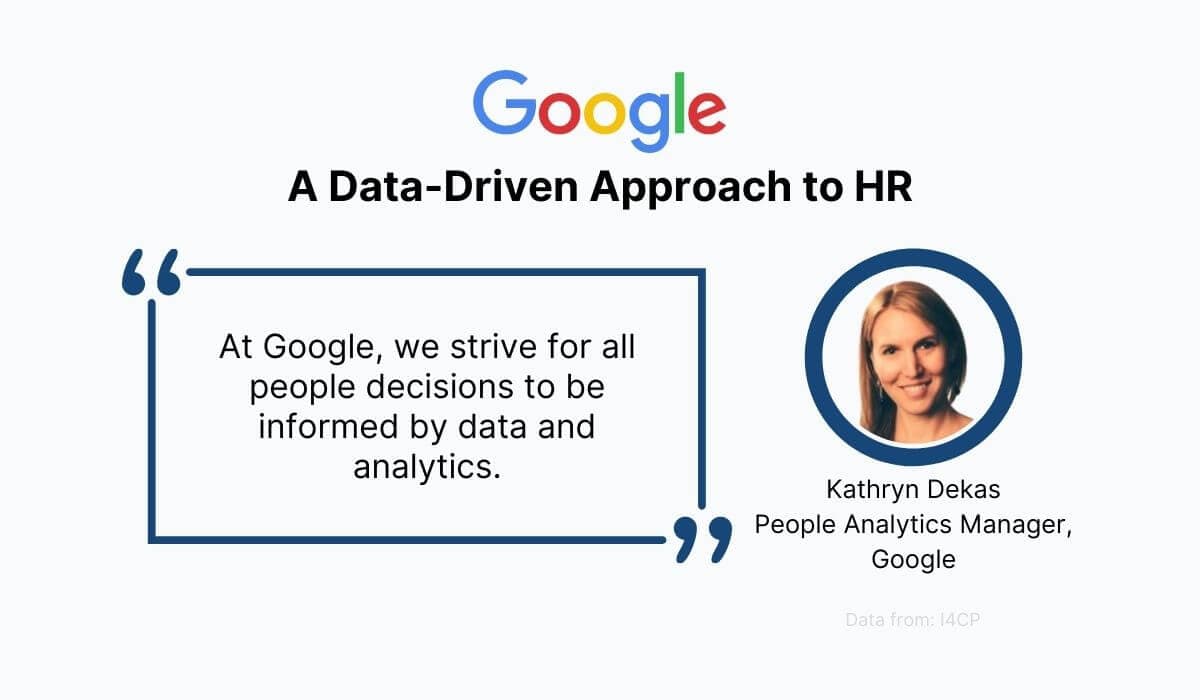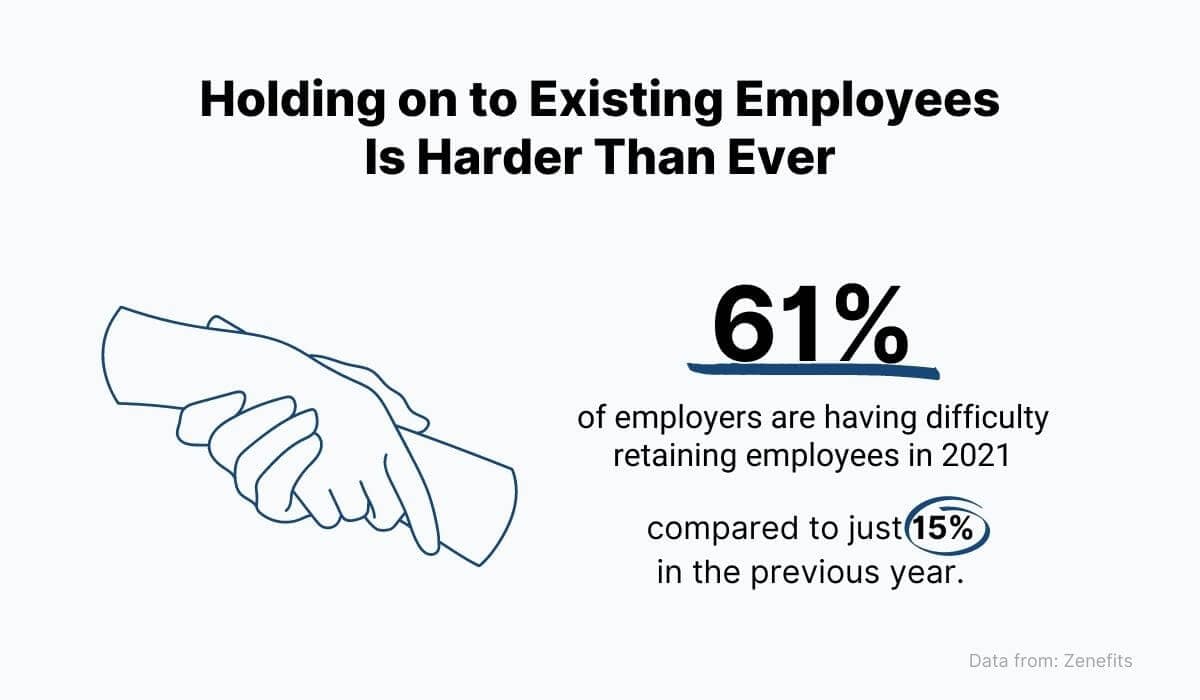At the beginning of 2022, there’s no longer any doubt that we’re operating in a “worker’s market.”
There’s a staggering number of open positions at every level across industries, while the number of workers able to fill them is consistently wavering.
To overcome the challenges of acquiring talent and retaining quality employees, today’s employers and HR experts need to stay alert and monitor the current HR trends that stand to give them an edge in employee recruitment and retention.
In that regard, one of the most sensitive HR areas, which has seen some big developments in recent times, is employee onboarding.
This article will give you valuable insight into current onboarding trends and provide you with the tools to quickly and effectively onboard employees in 2022, enhancing your chances of retaining them for years to come.
Accelerated Onboarding
In a lot of ways, current global events, such as the ongoing COVID-19 pandemic, are going to have a major impact on how we train and onboard new employees. We actually wrote a blog post about how to onboard new employees during the pandemic.
Just look at the Great Resignation, the recent phenomenon of increased job abandonment caused by employee health safety concerns and low salary growth.

Source: Statista
With these kinds of turnover numbers, it’s clear that new employees will have to be onboarded more efficiently than ever.
That’s why a lot of HR experts are considering ways to accelerate the onboarding process without sacrificing quality, and allowing workers enough time to really become fully-functioning members of the organization.
It’s an interesting conundrum, isn’t it?
To get on top of it, instead of simply shortening the onboarding process, many companies are starting to restructure it. How?
Let’s look at some examples.
You probably already know that introducing new employees into company culture is an extremely important aspect of onboarding.
But if you think about it, there’s no real reason why your culture should be restricted to just your employees.
Modern-day companies are using new media and social networks to broadcast their values to prospective candidates, even before they apply for jobs.
Other companies like to use their social outlets, such as the LinkedIn “Life” feature, to speak out about their ideals.

Source: LinkedIn
In the screenshot above, you can see how HubSpot advertises its inclusiveness, which is a great way to attract qualified candidates of diverse backgrounds.
Having been exposed to this kind of content, new employees are getting a sense of what life at a company is really like.
As a result, they come into work already aligned with the values and culture of a company, allowing them to be onboarded in less time.
By “exporting” their culture and values in this way, companies can accelerate the onboarding process and bring new employees to the point of peak productivity and complete assimilation faster.
So if you need to onboard employees at an accelerated rate, share what matters to you.
Also, try to think of more aspects of working at your company that can be learned even before the hiring process is complete.
Automation of Mundane Onboarding Tasks
Another way to simultaneously accelerate onboarding and make it more efficient is automation.
With today’s advances in subscription software, there are so many processes that can be successfully automated and it comes as no surprise that onboarding is one of them.
And we’re not just saying that.
Surveys have shown that a great majority of today’s modern companies, especially startups in their growth phase, now employ onboarding software to help automate tasks such as paperwork and feedback collection.

Source: Archbee.com
Onboarding software, such as Sapling or BambooHR, offers complete solutions that can help you welcome new hires and get them caught up on your work processes in no time.
It usually has task automation features, preboarding paperwork packages, get-to-know-you surveys, and progress tracking capabilities.

Source: BambooHR
But many companies don’t need this high level of service and instead opt for software solutions to take on just part of the burden.
A good example of this is gamification software, like Pingboard, which large companies like to use to help new employees get acquainted with the members of their new team through fun activities, such as a “who’s who” quiz.

Source: Pingboard
Another useful tool is our own software, Archbee, a document management platform that allows users to put all of their important documents in one place and share access with the relevant people.
A great way to use our platform is to build an employee handbook that your employees can access any time and from anywhere, as Archbee allows you to store and access documents online.

Source: Archbee.com
That way, new employees are empowered to make progress on their own, saving your company a lot of time and human resources.
All in all, it’s a new day for corporations everywhere, thanks to amazing software that can help you automate a lot of the work that goes into onboarding.
Research the opportunities available to you, and don’t miss out on the benefits they can bring.
Emphasis on Personal Connections
As a leader, you probably already know that the social component of employee onboarding is also its most crucial part.
Helping new workers settle in and establish real connections and lasting professional relationships is the key to employee engagement, happiness, and retention.

Source: Archbee.com
With personal connections being such an integral part of the company experience, it makes sense that the ongoing pandemic and shift to remote work has so many managers and HR experts worried.
If we can’t work in close proximity, how are we meant to maintain our sense of camaraderie?
The solution for many companies is to put even more emphasis on connection building, especially during the onboarding process.
Companies that offer the best onboarding experience don’t let people work in isolation.
Instead, they’re holding even more one-on-one meetings between managers and workers, as well as team meetings during these trying times to make sure everyone stays on the same page.
And since in-person meetings aren’t a possibility right now, companies are turning to technology to facilitate their staff’s interactions.

Source: Zoom Blog
The screenshot above shows a work meeting taking place via the meeting app Zoom, which has grown from being an ordinary video conferencing tool to one of the biggest work apps on the planet in less than a year!
In fact, after reaching a market cap of $44 billion in April 2020, Zoom is now worth more than all of the major US airlines combined!
With regard to employee onboarding, companies are also ramping up their buddy systems and mentorship programs to make absolutely sure new recruits are feeling comfortable and supported as they’re starting their jobs.
For example, look at Prezly.
The company behind the excellent software for communications teams encourages new employees to showcase their unique personalities by asking them to share a fun fact about themselves when they first start working for the company.
These are then published on the company page.

Source: Prezly
The team also uses an impressive communication tech stack to allow for optimal collaboration and employee interactions.
Their stack includes Slack, Zoom, Linear, GitHub, Figma, Discourse, and Notion, among other apps that allow Prezly to function as a fully remote, fully flexible team.
The key takeaway here is that your onboarding process can still do an amazing job of helping new employees establish meaningful personal connections.
All it takes is a little more effort and a good communications tech stack.
More Interactive Onboarding
Remote work hasn’t just disrupted collaboration. The way we transfer knowledge and teach new hires about work processes has also had to change and adapt to a situation where on-the-job training, in the classic sense, just isn’t feasible.
However, while it’s definitely difficult to navigate this pandemic, the silver lining is that it hit us in times of significant technological advancements in virtual reality, new media, and gamification.
All of these are perfectly positioned to aid employee onboarding and make it even more effective than it ever was before.
Take VR, for example. Not many years ago, VR was considered bleeding-edge technology, reserved for high-end gaming only.
Now, it’s becoming a staple in the onboarding practices of companies worldwide.
This isn’t surprising. Employee sentiment about using VR in onboarding and training is overwhelmingly positive.
Workers everywhere are enjoying the interactive learning experience and feel more prepared for the challenges of work compared to past onboarding practices.

Source: Archbee.com
Technologies like VR can help employers simulate real work situations and create training tasks for new employees, which is very convenient for teams that work remotely, as they can train and learn in a safe space.
That’s why interactive onboarding is a major trend you should definitely be looking out for.
Let’s look at a real-life example of VR use in onboarding to better understand its capabilities.
Bank of America recently rolled out VR training in nearly 4,300 financial centers in the US.
The VR-supported training is used to develop a variety of soft skills, such as strengthening and deepening relationships with clients, navigating difficult conversations, and listening and responding with empathy, through more than 20 simulated situations trainees can choose from.

Source: VRScout
The pilot program was first rolled out to 400 test users, 97% of whom said they felt more comfortable performing work tasks after completing the simulations.
Therefore, even in situations where your new employees have to start working from home, developing technologies and new media allow you to prepare them for the challenges of work, even the ones that involve a high degree of human interaction.
Stronger Focus on People Analytics
Another big trend in onboarding right now is stepping away from “gut feelings” and letting good, hard data drive the development of your onboarding process.
Relying more on data to improve product development and customer service is nothing new.
That said, more and more HR experts are now discovering that employee experience, engagement, and performance can also be tracked and developed using a special approach called people analytics.
Obviously, human behavior and emotional states aren’t easily quantifiable, but a lot can be done by using employee surveys.
Many employers today are using surveys for a variety of purposes, including:
- Measuring productivity, engagement, and satisfaction
- “Keeping a finger on the pulse” of their workforce
- Collecting feedback and acting on it
- Gathering ideas on how to improve processes
With enough data gathered, employers are enabled to really listen to what their workforce needs to achieve success, and are better positioned to provide it.
And this can make for much happier and more productive employees.
Take Google, for example. Their HR department (which carries the unique name People Operations) uses employee surveys to ask their employees questions about the challenges they’re facing at work.
The feedback they gather is then turned into action to continually improve employee engagement and satisfaction.

Source: Archbee.com
This allowed employee engagement to really bloom, with a participation rate of over 90%!
But how can people analytics help your onboarding process specifically? Well, there are many ways, and here are a couple of examples.
Microsoft is another company that relies on employee surveys to measure its employees’ happiness. One of the questions in their survey explores how happy employees are with the company’s onboarding process.
This simple question helped the company realize that the employees who had a bad onboarding experience were much more likely to leave the company within their first year of joining.
By acting on this information and giving their onboarding process more attention, the company was able to significantly lower employee turnover.
Another example can be found at Chef. This company offers a very complex product.
Therefore, their employee survey zoned in on the issue that many people at the company had trouble understanding: what it is that Chef does?

Source: Chef
As you already know, being unclear on company goals and mission almost always results in low employee engagement.
To remedy this, the company included special training on the functions and features of the app for non-technical personnel, which helped make employees feel more engaged.
To sum up, there’s a treasure trove of information available to you that can help you develop and improve your onboarding process through people analytics.
To access it, ask your employees questions about what they really need, both while onboarding and during their subsequent employment at your company.
Re-Boarding Existing Employees
We’ve covered onboarding goals in a previous article, and a major one was to make sure your employees stay with you for a long time.
To achieve this, employers sometimes need to help employees expand their training or re-learn past lessons. This additional training is usually called re-boarding.
In recent times, some employers have been seeing bigger turnover rates, which can be attributed to the challenges of switching to remote work.

Source: Archbee.com
That’s because some companies don’t seem to realize that such a big shift requires its own onboarding (or rather, re-boarding) procedure to ensure existing employees acquire and become comfortable with the new way of doing things.
Let’s see some elements of re-boarding for remote work that could make a difference in your retention efforts.
For one, it’s extremely important to assess each employee’s remote work capabilities.
Does the employee have a peaceful work environment? If not, is there a coworking space nearby you could set up for them?
If they can work from home, do they have everything they need to do their job (i.e., an appropriate desk and chair, a computer, a good modem)?

Source: Archbee.com
Furthermore, working remotely may require you to expand your tech stack. Handling all company communication through email just won’t do in this situation, and your staff will get frustrated very quickly.
So if you haven’t already, do invest in tools such as Slack to enable a free flow of information.
Make sure the entire team has the necessary licenses, and put some time aside to train employees to use the new tools.
Finally, it’s vital that your employees feel connected to their team while working in isolation.
This aspect of re-boarding is quite similar to regular onboarding in the sense that you need to plan activities and facilitate employee interactions to keep your company culture alive.
A company that’s really nailing this last aspect is Xenter, the wireless medical device developer.
When new employees join their company as remote workers, they’re sent a $20 GrubHub gift card and invited to a virtual lunch.
Sitting down to eat with their new team, the new recruits get to introduce themselves in an informal setting and even play a game of two truths and a lie.

Source: GrubHub
This is a great practice you can apply to your existing team as well.
You don’t need to hold daily lunches, but sitting down together every now and then is a great way to keep those connections alive.
And paying for lunch will surely delight your employees and boost their commitment to the company in these uncertain times.
Remember, thinking of onboarding as a one-time event is becoming outdated. Nowadays, employers are coming to understand that employees need to brush up on old skills and learn new things to really be effective at their jobs.
And this is especially true in extraordinary circumstances, like the ones we’re currently experiencing.
Onboarding Trends for a Brand New Corporate Era
Evidently, the biggest onboarding trends for 2022 represent a giant effort to keep the workforce safe, happy, and committed to remaining in their roles while facing the crisis brought on by the pandemic and the subsequent Great Resignation.
An effective onboarding program for this new era is accelerated and partly automated for convenience.
It also makes use of new technologies and puts a greater emphasis on people than it ever did before, by facilitating personal connections and driving HR efforts using people analytics.
Last but not least, employee onboarding is finally being recognized as a long-term process that supports workers during their entire time with a company, instead of just the beginning.
Now that you know the basics, it’s time to see how employee onboarding trends can be adapted and molded to reflect the unique characteristics of your company and serve your employees effectively.
We let you with two read recommendation as the finish of our article:
1. How to Write a Great Welcome to The Team Email
2. 15 Inspirational Welcome Messages for Your New Employees
FAQ
Frequently Asked Questions
COVID-19 pushed onboarding to become faster, more digital, and more people-focused. Companies are restructuring the process to shorten time-to-productivity without sacrificing quality by: preboarding (sharing culture, values, and expectations before day one via careers pages and social channels), moving paperwork and task checklists into onboarding platforms with e‑signatures and automation, running fully remote or hybrid welcome experiences (virtual orientations, manager 1:1s, and team meet-and-greets), and using tools like Slack and Zoom to keep new hires connected. The result is an onboarding experience that starts earlier, uses more software to remove admin friction, and puts extra emphasis on human connection in a remote world.



